Ever dreamed of ditching your 9-to-5 and running your own online store?
You’re definitely not alone. Thousands of people are figuring out how to get started with ecommerce right now, and the timing couldn’t be better.
Here’s what most people get wrong about starting an ecommerce business, they think it’s either impossible or requires tons of money upfront. Both are complete myths.
The reality? When you understand ecommerce how to start properly, you skip the costly mistakes that kill most online stores before they even get going. These are the same methods working for store owners making six figures today, not some recycled tips from a decade ago.
If you’re brand new or you’ve got an existing business looking to grow ecommerce business online, you’ll get a step-by-step roadmap that actually makes sense. We’ll skip the technical jargon and focus on what matters building something profitable from day one.
Time to create your own success story?
Research and Planning for Start an Ecommerce Business
Conducting Market Research

A small business owner looking to start a dog walking service conducted market research and discovered that there was a high demand for pet care services in their area, leading them to launch their business and quickly gain clients. One of the crucial steps in starting an ecommerce business is conducting market research to determine if there is demand for your product or service. This includes identifying your target audience, understanding their needs and preferences, and analyzing your competition. By doing so, you can ensure that there is a market for your product or service, and tailor your business accordingly to stand out in a crowded marketplace.
Identifying your Target Audience

The fitness company targets middle-aged women who are interested in low-impact exercises while competing with other fitness companies that also target this demographic with similar offerings such as yoga classes and Pilates sessions. To effectively target your marketing efforts, it’s important to identify and understand your target audience.
This involves researching their demographics (such as age, gender, income, and location), interests, and pain points. You can use this information to choose the right marketing channels and tactics to reach your target audience similar to the middle-aged women who started her fitness company.
Researching Your Competition

A new small business owner wants to open a coffee shop in a busy downtown area. By researching the competition, the owner discovers that there are already several established coffee shops in the area, but none of them offer specialty tea beverages. The owner decides to differentiate their business by offering a wide variety of tea options, which sets them apart from the competition and attracts a unique customer base.
This involves analyzing their products and services, marketing strategies, and unique selling propositions (USPs). By identifying gaps in the market, you can position your business to stand out and offer something that your competitors don’t. Additionally, by understanding your competition, you can learn from their successes and failures and use this information to improve your own business.
Creating a Business Plan for Starting an Ecommerce Business

A couple wanted to start an ecommerce business for selling organic baby clothes. They created a business plan that detailed their target market, competition, and marketing strategies. They set goals for their business, such as generating a certain amount of revenue within the first year and expanding their product line, and developed a plan to achieve those goals through targeted social media advertising and building relationships with other businesses in the baby industry.
So, Creating a business plan is essential for starting any business, including an ecommerce business. A business plan outlines your goals, strategies, and financial projections, and serves as a roadmap for your business. Your business plan should include information on your target audience, competition, marketing strategy, and financial projections.
Read More: To Know about Ecommerce Website Development
Setting Up Your Website To Start An Ecommerce Business
Choosing a domain name and hosting service
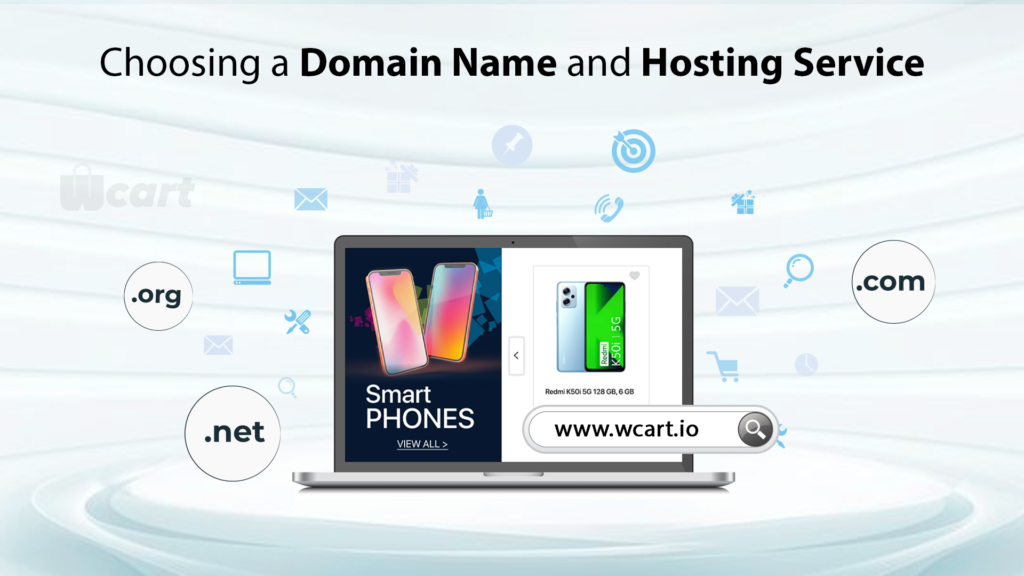
A freelance web designer was creating a portfolio website to showcase her work. She chose a domain name that was simple and easy to remember and selected a hosting service that offered fast loading times and reliable uptime. This allowed her to showcase her work effectively and attract potential clients to her website.
Choosing a domain name and hosting service is a critical step in starting an ecommerce business. Your domain name is the web address that customers will use to find your online store, so it should be easy to remember, relevant to your business, and reflective of your brand identity.
Designing a user-friendly website that aligns with your brand

A small business owner wanted to create a website for her handmade jewelry business. She designed a user-friendly website that aligned with her brand, using a color scheme and font that reflected the style of her jewelry. She also ensured that the website was easy to navigate and had clear product descriptions, resulting in increased online sales and customer satisfaction.
So, designing a user-friendly website is essential for the success of your ecommerce business. Your website should be easy to navigate, visually appealing, and aligned with your brand identity. This involves choosing the right colors, fonts, and images that reflect your brand, and creating a layout that makes it easy for customers to find what they’re looking for.
Optimizing your website for SEO

A small business owner hired an SEO consultant to optimize her online store for search engines. The consultant conducted keyword research, optimized the website’s title tags and meta descriptions, and improved the site’s loading speed. As a result, the business owner’s website appears higher in search engine rankings, leading to increased organic traffic and sales.
To optimize your website for SEO, start by conducting keyword research to identify the terms and phrases that your target audience is searching for. Then, incorporate these keywords into your website content, including your product descriptions, blog posts, and metadata.
Creating Compelling Product Listings
Highlight the Benefits and Features of your Products

An e-commerce business owner hired a copywriter to craft compelling product descriptions for their new line of skincare products. The copywriter highlighted the benefits and features of each product, emphasizing the natural ingredients and the product’s effectiveness in improving skin health. As a result, the business owner saw an increase in conversions and sales due to the clear and persuasive product descriptions.
Creating compelling product listings by way of great copies ( copywriting ) is essential for driving sales and attracting customers to your ecommerce business. Your product listings should provide detailed and accurate information about your products, including product descriptions, images, and pricing information.
To create compelling product listings, start by focusing on the benefits of your products and how they solve a problem for your target audience. Use clear and concise language to describe your products, and include high-quality images that showcase your products from multiple angles.
Including High-Quality Images

A photographer was hired by an online retailer to capture high-quality images and videos of their new clothing line. The photographer used professional equipment and lighting to showcase the products in the best possible way, and the online retailer included the images and videos on their website and social media channels. This led to an increase in engagement and sales, as customers were able to see the products in detail and visualize themselves wearing them compared to the ones taken in a non-professional environment.
Including high-quality images and videos of your products when showcasing them online is essential for any business that wants to succeed in the digital world. By providing clear, visually appealing images and videos of their products, businesses can increase engagement with potential customers, improve the user experience, and ultimately increase sales.
To achieve high-quality visuals, businesses can follow tips such as using proper lighting and editing techniques. By incorporating these elements into their online marketing strategy, businesses can effectively showcase their products and attract and retain customers online.
Pricing your Products Competitively

A small business owner wanted to price their handmade soap bars competitively in the local market. They researched the prices of similar products and adjusted their pricing strategy accordingly, while still ensuring a reasonable profit margin.
They also offered promotions and discounts for loyal customers to incentivize repeat purchases. This resulted in increased sales and customer satisfaction.
Pricing your products competitively is essential for attracting customers and driving sales in your ecommerce business. This involves researching your competitors and market trends, identifying your costs and profit margins, and setting prices that are competitive and profitable.
Ultimately, the goal is to set prices that are competitive and profitable for your ecommerce business. By researching your competitors, considering your costs, and pricing your products accordingly, you can attract and retain customers and drive sales.
From Idea to First Sale – Launch Your Ecommerce Business This Month!
Marketing Your Ecommerce Business
Creating a Marketing Strategy
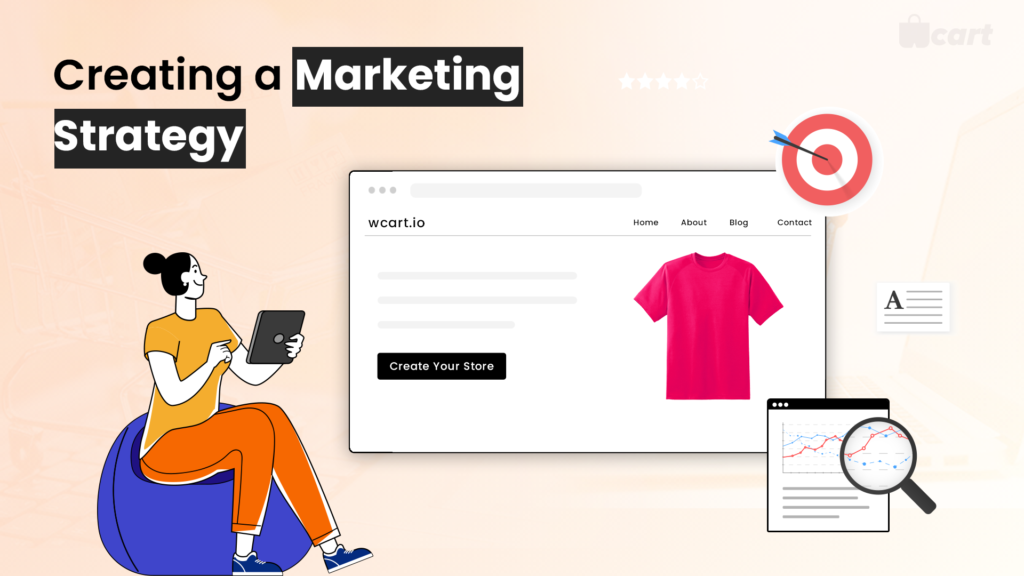
A startup company hired a marketing agency to create a strategy that would reach its target audience of young adults interested in sustainable fashion. The agency developed a social media marketing plan that included sponsored posts on Instagram and collaborations with eco-friendly influencers. They also implemented email marketing campaigns and offered exclusive discounts to subscribers. As a result, the startup saw an increase in brand awareness and sales among its target audience.
Creating a marketing strategy is essential for reaching your target audience and driving sales in your ecommerce business. This involves identifying your target audience, choosing the right marketing channels, and developing compelling marketing messages and campaigns.
Some common marketing channels for ecommerce businesses include social media marketing, email marketing, influencer marketing, and paid advertising. Each channel has its own advantages and disadvantages, so it’s important to choose the channels that are most effective for your business and target audience.
Setting up and Managing Paid Advertising Campaigns

A small business owner wanted to increase their online visibility and drive traffic to their e-commerce store. They hired a digital marketing agency to set up and manage paid advertising campaigns on Google and Facebook. The agency conducted keyword research, created ad copy and visuals, and monitored the campaigns’ performance to optimize for better results. As a result, the business owner saw an increase in website traffic, conversions, and sales.
Paid advertising can be a powerful way to reach new customers and drive sales for your ecommerce business. This involves creating and managing advertising campaigns on platforms like Google Ads and Facebook Ads.
To set up and manage paid advertising campaigns, start by defining your advertising goals and identifying the key metrics you want to track, such as clicks, conversions, and return on ad spend (ROAS). This can help you create campaigns that are targeted and effective.
To set up and manage paid advertising campaigns, start by defining your advertising goals and identifying the key metrics you want to track, such as clicks, conversions, and return on ad spend (ROAS). This can help you create campaigns that are targeted and effective.
Building Relationships with Customers
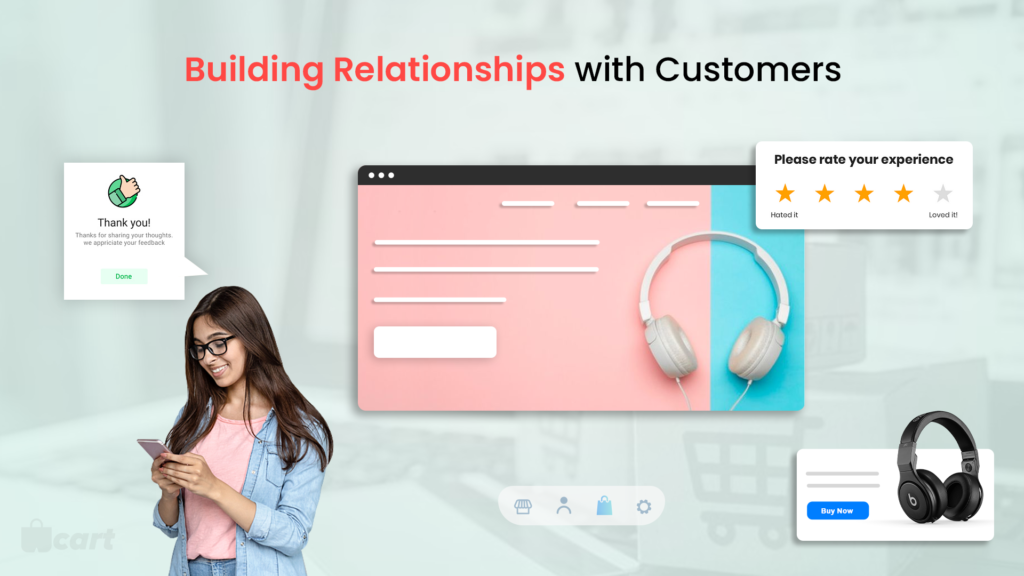
A customer service representative for a popular ride-sharing app helped a customer who had left their phone in a driver’s car. The representative went above and beyond to locate the driver and arrange for the phone to be returned to the customer. The customer was impressed by the level of service and left a glowing review, leading to increased trust and loyalty towards the brand.
Providing excellent customer service is critical for building long-term relationships with your customers and growing your ecommerce business. This involves delivering a high level of service and support at every stage of the customer journey.
To provide excellent customer service, start by setting clear expectations and providing helpful information and resources on your website and in your communications. This can help customers feel confident in their purchase and reduce the likelihood of customer service issues
Monitoring Your Business Metrics
Tracking important metrics like website traffic, conversion rates, and customer retention
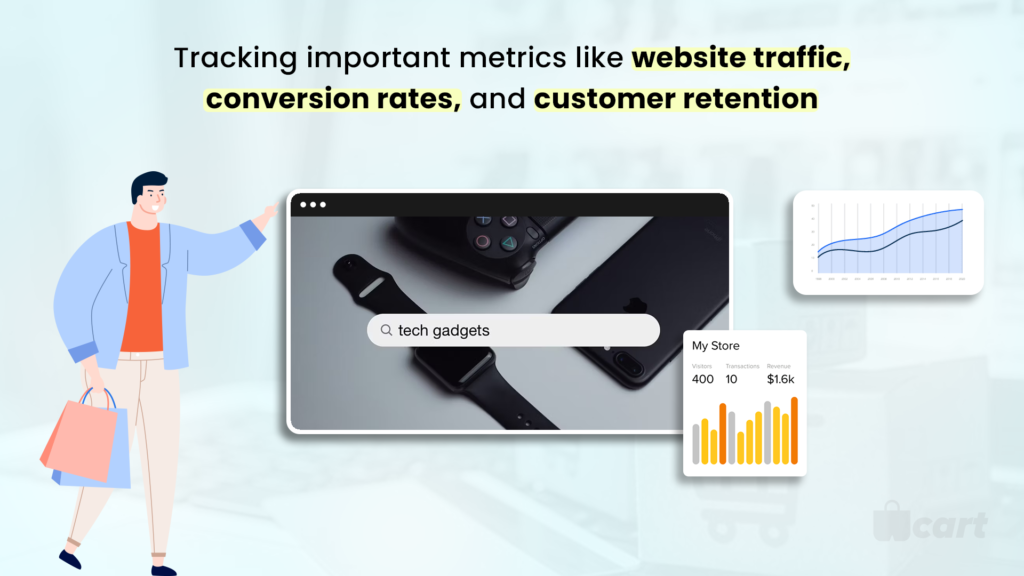
Tracking and analyzing key metrics is essential for measuring the success of your ecommerce business and making data-driven decisions. Some important metrics to track include website traffic, conversion rates, and customer retention. To track website traffic, use analytics tools like Google Analytics to monitor website visitors, page views, and other engagement metrics.
- Website traffic measures the number of visitors to a website and is crucial for businesses to assess the effectiveness of their marketing efforts. By tracking website traffic, businesses can determine which sources are driving traffic to their website, identify areas of improvement, and adjust their strategies accordingly.
- Conversion rates measure the percentage of website visitors who take a desired action, such as making a purchase or filling out a form. By monitoring conversion rates, businesses can identify areas where visitors are dropping off and implement strategies to increase the percentage of conversions.
- Customer retention measures the percentage of customers who return for repeat business and is an essential metric for businesses to assess customer loyalty. By tracking customer retention rates, businesses can identify opportunities to improve their products or services and implement strategies to increase customer satisfaction and loyalty.
Using analytics tools to gain insights into your business performance

Analytics tools are significant for ecommerce businesses looking to gain insights into their performance and optimize their strategies. By leveraging these tools, businesses can gain valuable insights into customer behavior, website performance, and marketing effectiveness. Here are some of the key analytics tools that ecommerce businesses can use to gain insights into their business performance:
- Google Analytics: Google Analytics is a free tool that allows businesses to track website traffic, user behavior, and conversion rates. With Google Analytics, businesses can gain insights into where their traffic is coming from, which pages are most popular, and which marketing campaigns are driving the most conversions.
- Customer Surveys: Customer surveys, such as those offered by SurveyMonkey and Typeform, allow businesses to collect feedback from customers on their experiences with the website, products, and services. This feedback can provide valuable insights into customer needs and preferences, and help businesses identify areas for improvement.
- Social Media Analytics: Social media analytics tools, such as Hootsuite and Sprout Social, allow businesses to track engagement, followers, and click-through rates on social media platforms. By analyzing this data, businesses can gain insights into which social media channels are driving the most traffic and engagement.
- Ecommerce Platform Analytics: Most ecommerce platforms, such as Shopify and WooCommerce, provide built-in analytics tools that allow businesses to track sales, revenue, and customer behavior. These tools can provide valuable insights into which products are selling the most, which marketing campaigns are driving the most sales, and which customers are most valuable to the business.
Overall using analytics tools to gain insights into their business performance, ecommerce businesses can optimize their strategies, improve customer experiences, and drive sales growth. By continuously analyzing and adjusting their strategies based on data, businesses can stay ahead of the competition and deliver exceptional customer experiences.
Making data-driven decisions to improve your ecommerce business
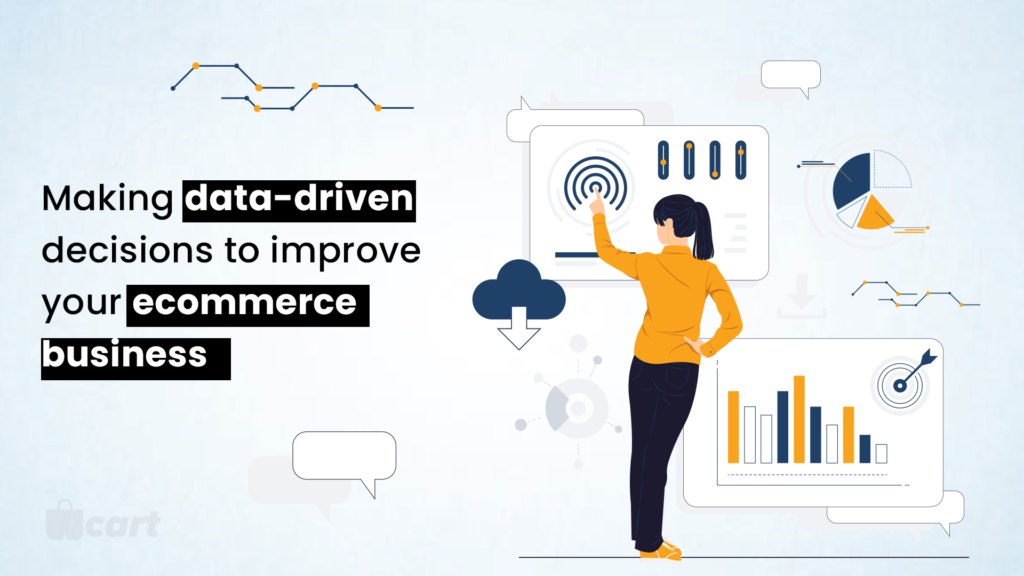
Data-driven decision-making is crucial for the success of starting an ecommerce business. By analyzing data, businesses can gain insights into customer behavior, sales trends, and website performance, which can inform strategic decisions and drive business growth. Here are some key steps to making data-driven decisions to improve your ecommerce business:
- Define Your Metrics: Identify the key performance indicators (KPIs) that are important to your business, such as conversion rate, average order value, and customer lifetime value.
- Collect and Analyze Data: Use tools such as Google Analytics, ecommerce platforms, and customer surveys to collect data on your website, sales, and customer behavior. Analyze this data to identify trends, patterns, and areas of improvement.
- Set Goals: Based on your data analysis, set specific, measurable goals that align with your business objectives and KPIs.
- Test and Experiment: Implement changes to your website or marketing strategies, and use A/B testing to measure the impact on your KPIs.
- Measure Results: Monitor the impact of your changes on your KPIs, and use data analysis to evaluate the success of your experiments.
- Adjust Your Strategy: Based on your data analysis and results, adjust your strategy to optimize your KPIs and achieve your business goals.
Finally, by making data-driven decisions, ecommerce businesses can improve website performance, optimize marketing campaigns, and drive sales growth. So, by continuously analyzing and adjusting their strategies based on data, businesses can stay ahead of the competition and deliver exceptional customer experiences.
Conclusion
So there you have it. Everything from picking what to sell to choosing an ecommerce platform and actually getting your first customers through the door. Seems like a mountain to climb when you’re sitting here reading about it, right?
But honestly? Most people never even try. They read guides like this, bookmark them, and then… nothing. Don’t be that person.
Starting an ecommerce business isn’t going to be a walk in the park. You’ll probably mess up a few things along the way – everyone does. But once you get your first sale, then your tenth, then your hundredth, you’ll kick yourself for not starting sooner.
Think about it – people bought $5.7 trillion worth of stuff online last year. That number keeps getting bigger every single year. There’s room for you in there, you just have to grab your piece.
The store owners making real money today? They weren’t any smarter than you. They just started.
Stop waiting for the perfect moment. Your customers are out there right now, probably buying from someone else because you haven’t opened your doors yet.




Leave a Reply